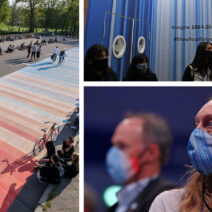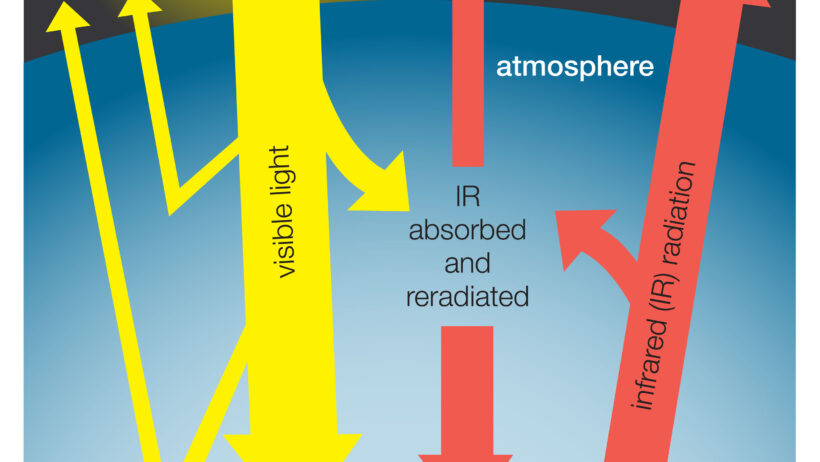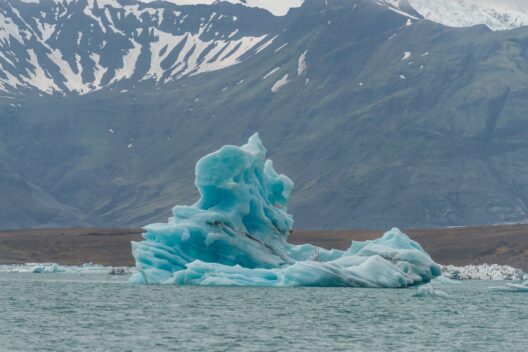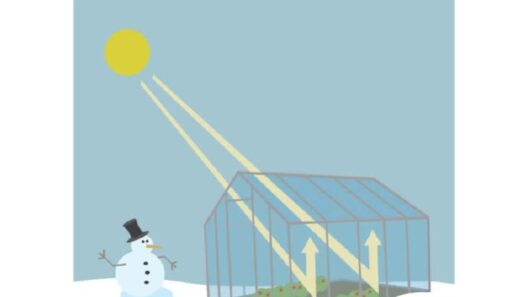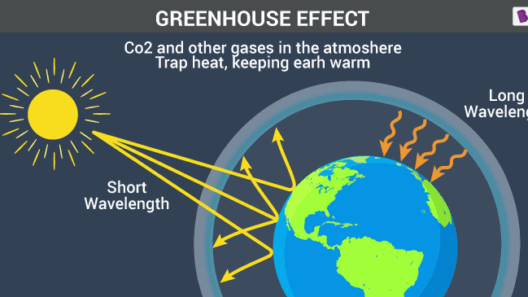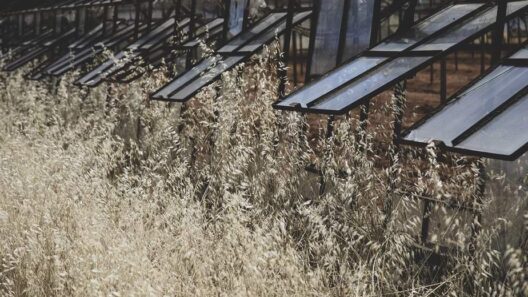The delicate balance of our planet teeters precariously between life as we know it and inhospitable desolation, largely due to the phenomenon known as the greenhouse effect. This natural process warms our Earth by trapping heat from the sun, allowing for a stable climate that sustains various ecosystems. But have you ever pondered the consequences of the absence of greenhouse gases? What would our world be like without them? To explore this hypothetical scenario is to delve into a chilling vision of a planet markedly different from the one we inhabit today.
The Frigid Reality of a Greenhouse Gas-Free World
Imagine waking up in a world shrouded in perpetual twilight, where sunlight spills across the landscape but fails to warm it adequately. The absence of greenhouse gases would lead to an Earth drastically colder than what we currently experience. The average global temperature would plummet to around -18 degrees Celsius (0 degrees Fahrenheit), a stark contrast to the present average of approximately 15 degrees Celsius (59 degrees Fahrenheit).
In this frigid environment, the majority of the world’s water bodies would freeze, turning once-vibrant oceans and lakes into vast expanses of ice. The polar caps would expand aggressively, encroaching upon regions like northern Europe and North America. Deserts, too, would morph into barren wastelands, unable to sustain life as we recognize it.
With such a catastrophic temperature drop, seasons would become a blur of sameness. The refreshing rains of spring and the bursts of color in fall would be replaced by unchanging tundra. A monotonous landscape, where life struggles to adapt, would replace the biodiversity we cherish today.
The Collapse of Ecosystems: A Symbiotic Symphony Disrupted
The ramifications of a greenhouse gas-less Earth extend deeply into ecosystems and biodiversity. Currently, numerous species rely on specific temperature ranges to thrive. Without the protective shield of greenhouse gases, many habitats would undergo irreversible transformations. The lush rainforests of the Amazon would succumb to desiccation, as the delicate interplay of moisture and temperature falters.
Animals, too, would face dire consequences. Species like polar bears, adapted to cold environments, may find their survival threatened far before their warmer-climate counterparts. Coral reefs, the vibrant cities of underwater life, would be rendered ghostly remnants, as their physiological makeup could not cope with the dramatically reduced temperatures.
Many insects and pollinators that play critical roles in the life cycles of plants would see their lifespans reduced, or potentially vanish altogether—causing a ripple effect throughout the food chain. The interdependence of flora and fauna would disintegrate, leaving only pockets of life struggling to survive against overwhelming odds.
Agricultural Armageddon: Food Scarcity and Threatened Livelihoods
The implication for agriculture is profound. Crops that rely on a stable climate would cease to yield the abundant harvests required to sustain a growing global population. The familiar grains that fill our diets—wheat, rice, and corn—thrive within specific temperature ranges and respond to seasonal changes. Without greenhouse gases, these essential crops would falter, leading to widespread food shortages.
Imagine fields once teeming with life being replaced by dead soil. Farmers worldwide would be rendered helpless, their livelihoods devastated by the sudden inability to cultivate food. This drastic shift could lead to mass migrations, as people flee from barren lands in search of sustenance, triggering conflicts and social upheaval.
The loss of reliable agricultural production would exacerbate existing tensions, driving resource scarcity to the forefront of global issues. In a world where hunger reigns supreme and communities fracture under stress, the social fabric may unravel, leading to unease and instability on a cosmic scale.
The Art of Survival: Humanity’s Adaptation to Harsh Realities
Humans, as adaptable creatures, might innovate in unexpected ways to survive an Earth stripped of natural greenhouse gases. Ingenious solutions—albeit expensive and complex—could emerge, ranging from advanced climate engineering technologies to vertical farming systems encased in temperature-controlled habitats. However, the costs associated with these adaptations would further exacerbate inequalities, as not every nation or community would possess the resources to adapt effectively.
The potential for conflict over habitable land and resources could transform geopolitical landscapes. Nations may resort to alliances or enmities dictated by survival needs. The capricious nature of climate would place unprecedented pressure on international relations, as countries failing to adapt may look to their neighbors for resources or refuge.
Imagining a Glimpse of Hope Amidst Utter Desolation
Yet, even in this stark warning lies a glimmer of optimism. The contemplation of a greenhouse gas-free world underscores the profound significance of preserving our environment. It serves as a roadmap, emphasizing the need for concerted efforts to combat climate change and promote sustainability.
The acknowledgement of ecosystems’ fragility can ignite action and inspire hope. Whether through reforestation, fossil fuel reduction, or transitioning to renewable energy, humanity possesses the tools to avert such a dystopian future.
In the absence of greenhouse gases, the Earth we inhabit transforms into a bleak and inhospitable realm. The chilling winds would howl through empty landscapes, reminding us of the critical balance we must maintain. The reflections from this exercise invite us to take urgent action today, ensuring our planet’s vibrant ecosystems continue to thrive for generations to come. The allure of life as we know it challenges apathy and calls for resilience in the face of climate change.
